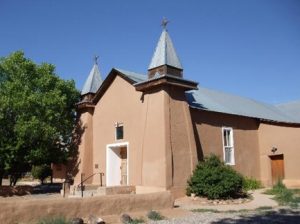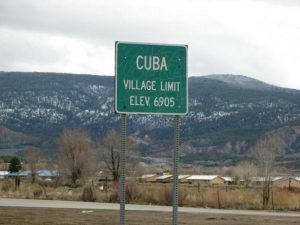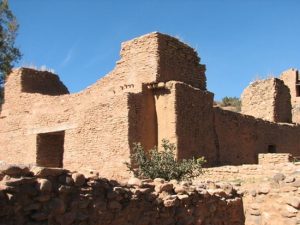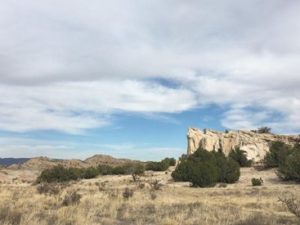Did You Know – September 2023
There are 4 villages in Sandoval County: Corrales, Cuba, Jemez Springs and San Ysidro.
Village – A village is a clustered human settlement or community, larger than a hamlet but smaller than a town, with a population ranging from a few hundred to a few thousand.
1. Corrales: The term Corrales in English means “coral” or farmyard.
History: First farmed by Tiquex Pueblo people, chosen due to its proximity to the Rio Grande, in the late 1500s.
The first evidence for human occupation of the Corrales area dates to about 500 A.D. and comes from pit house sites located along the sandy slopes above the valley floor. These pit houses eventually evolved into Indian pueblos. Even as late as 1870 the census records only 14 households with 687 residents.
At the end of the 19th century Alejandro Sandoval moved to the village and bought large tracts of land. He served in the New Mexico House of Representatives and had the name of Corrales changed to Sandoval in honor of his father, Francisco Sandoval. The name remained until 1960 when some determined residents succeeded in having the name changed back to Corrales.
Today: The village has a total area of 11.2 square miles of which 10.7 square miles is land and 0.5 square is water. In 2021, there were 8,584 people residing in the village. The racial makeup of the village was 69% White, 23% Hispanic and 3% Asian. The median age was 42 years. The median income for a household in the village was $93,899.
2. Cuba: Cuba in Spanish means “water tank” or trough.
History: Located at almost 7,000 above sea level, the village was established in 1887. In 1769, Spanish Governor Pedro Fermin de Mendinueta made the San Joaquin del Nacimiento land grant to 35 pioneering families who had settled the headwaters of the Rio Puerco in 1766. The community was later abandoned but was resettled in the late 1870s. Originally known as Nacimiento, or La Laguna, it was renamed Cuba when the post office was established in 1887. Na’azísí Bito’ (Gophers’ Water) is the Navajo place name for Cuba. Since the 11th century, this wilderness area of the Upper Puerco was used by subsistence cultures — the Apache, Navajo, and Pueblo people. This region is located within the Navajo Four Sacred Mountains.
Today: The village totals 1.3 sq. miles and has a population of about 700 people. In 2009, it’s population was double that figure. It has an average annual income of about $27,000. The largest population groups in Cuba are Hispanic (28%) and Native American (27%). Whites make up about 23% of the population.
3. Jemez Springs
History: As the name implies, Jemez Springs is abundant with nurturing hot springs – both commercial and primitive – whose healing mineral waters have attracted many here for centuries. In fact, archaeological findings discovered near Soda Dam date back as far as 2,500 BC. The pueblo of Guisewa what is now Jemez Springs – was occupied until the 15th century by ancestors of present day Jemez (Walatowa) people. Spanish missionaries arrived around 1541 and established missions in the area. Jemez Springs transformed into a tourist destination in the 1800’s because of the lure of its hot springs.
Today: There are approximately 200 full time residents who live in the village. The racial makeup of the village was 78.40% White, Hispanic or Latino of any race were 27.47% of the population. The village totals 4.8 miles Average age 57. $61,776 average income.
4. San Ysidro
History: The village has been a farming community since 1699 when Juan Trujillo established a settlement named for San Ysidro, or Saint Isidore the Farmer. The Village was incorporated in 1967.
Today: 2.3 sq. miles. 166 people. Average age 43. The median income for a household in the village was $48,992. White 10%, Hispanic 44%, Native American 40%.



